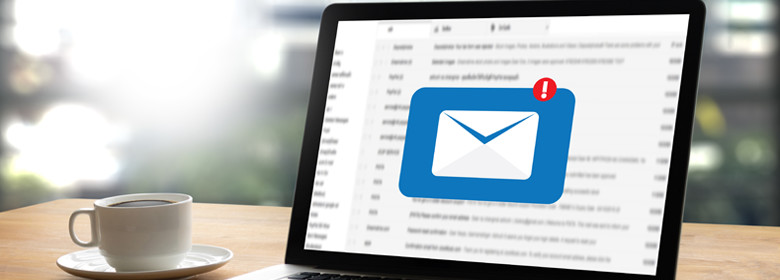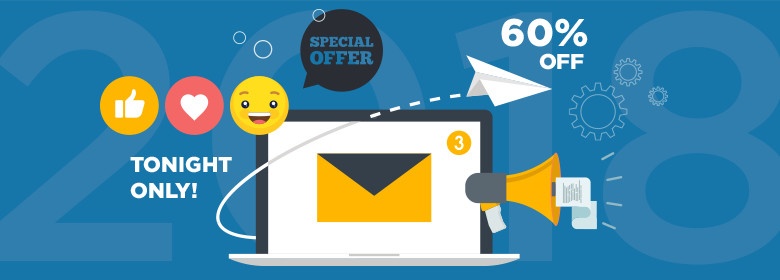
Never judge a book by its cover.
It may be tempting to think that the proverb applies equally to hardcopy books at the library as it does to emails, but statistics show quite the opposite.
Your email's subject line is its cover, and your recipients judge the quality of your content based on those few introductory words. In fact, 47 percent of email recipients report deciding whether to open an email based entirely on its subject line, and in reality the number may be much higher.
People are constantly bombarded by emails of hugely varying intent – often, the subject line offers the only effective sign of a message's intent. The snap decision that determines whether your email offers valuable insight or semi-literate spam happens in an instant, and the subject line is the best place to influence that decision.
Rethink Email Subject Lines for 2018

When it comes to digital marketing, new technological trends can make hype seem more important than substance. There are thousands of marketers out there waiting to sell the next big thing as the solution to consistent lead generation, but in B2B email campaigns, these trends come and go without leaving a lasting impression.
Great email marketing campaigns use tried-and-true methods that base their effectiveness on fundamental elements of human psychology. This smart, classic approach is more important than ever in 2018, and will continue to flourish for the foreseeable future.
For an example of hype gaining priority over substance, look at the past few years of emoji usage in email subject lines. That trend died for all but a handful of youth-oriented B2C retail marketers, and rightly so – it doesn't speak to the majority of B2B email recipients.
For your email marketing campaign to truly deliver, you need to base your approach on the needs and expectations of the people you are reaching out to. Consider the following psychological tactics and their effects:
- Fear of Missing Out (FOMO). Combine scarcity with a sense of urgency and you have the right elements in place to give recipients a fear of missing out on your latest big campaign.
This can be a direct call to action, such as, "Tonight Only! Last items in stock...", or it can be as simple as putting a bracketed tag "[URGENT]" in front of a regular subject line. - Curiosity. Ask a question, suggest a surprise, or assert something that seems strange and unusual to pique readers' curiosity. Humans are naturally curious, and using that curiosity by including a cliffhanger in your subject line can directly benefit your open rate.
Casual menswear company Chubbies offers a prime example. A promotional email of theirs, dedicated to a new line of color-changing swimwear, had the simple, catchy, and compellingly absurd title: "Hologram Shorts?!"
Grubhub combined curiosity with fear of missing out using this clever subject line: “Last Day to See What This Mystery Email is All About”. - Greed. Sales, discounts, and special offers can boost your open rate immensely. People don't like to think of themselves as greedy, but if an opportunity to make money comes along, few will pass it up. Likewise, steep discounts can push people from merely considering a purchase to actually making it, especially when curiosity and FOMO elements are included as well.
Importantly, there is a psychological difference between big discounts and small ones. You could very well get a better opening rate offering 10 percent savings than offering 50 percent. The key is to avoid making the deal sound too good to be true – it just needs to sound good enough.
Personalization and Retargeting
All of these approaches can boost your email campaign's open rates, but are best used in conjunction with email marketing software that lets you personalize and retarget both email subject lines and the content they introduce.
• Personalization lets you address recipients by name. Once you categorize recipients into demographic lists based on age, location, occupation, and other parameters, you can use all of these elements to write messages that appear finely tuned to that particular individual.
• Retargeting is an automated marketing process that contacts users after they perform an action, like purchasing a product or putting an item in their e-commerce shopping cart. In both cases, a quick, friendly email with an action-oriented subject line can lead to much larger gains for each successful conversion.
Consider the case of an e-commerce store sending out a personalized email to a user who added an item to the shopping cart and then left it there for a week: "[Customer Name], there's only a few [Product Name] left! Don't forget to buy yours today."
This approach uses FOMO marketing in the email subject line to convince the recipient that they might lose out on a product they want. Furthermore, it comes after the customer already expressed interest in the product, so you can be sure that you are sending it at the right time. Beyond clever subject lines, good timing is key to boosting your open rates consistently.



 United States
United States

